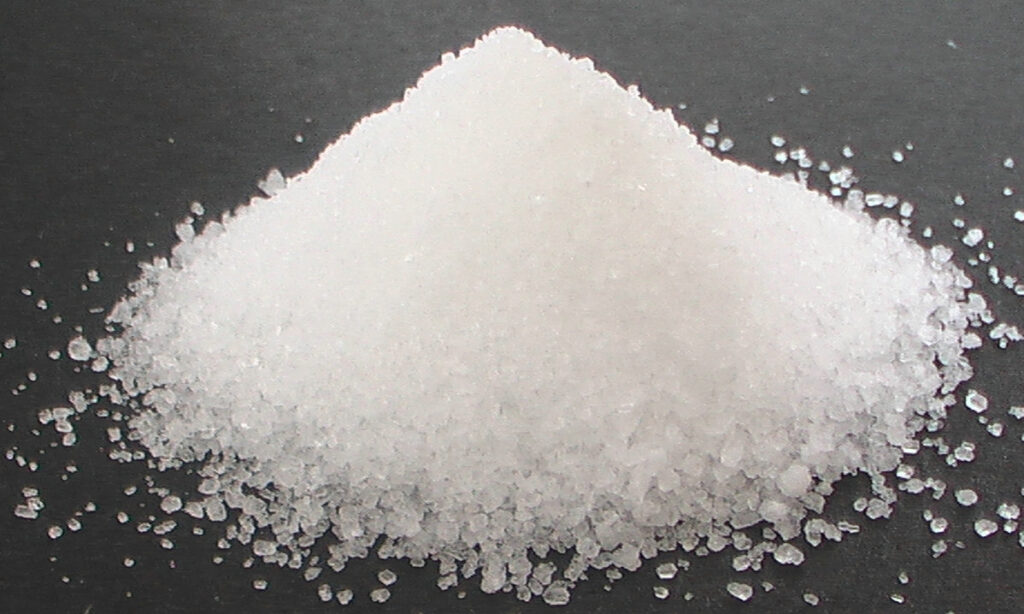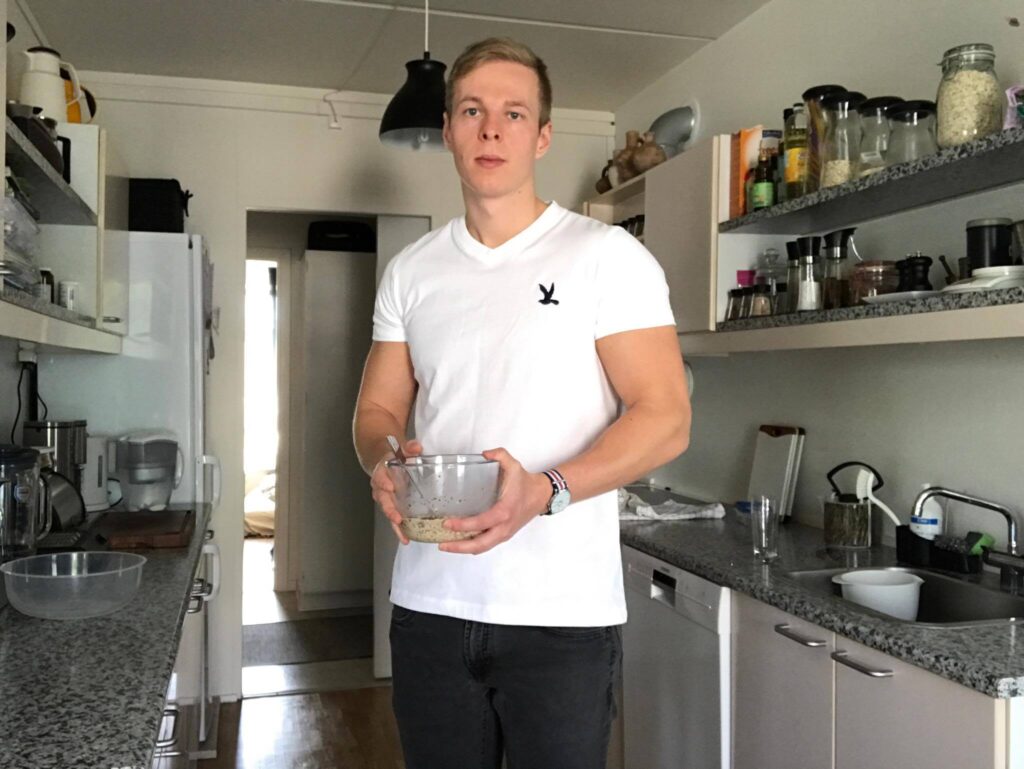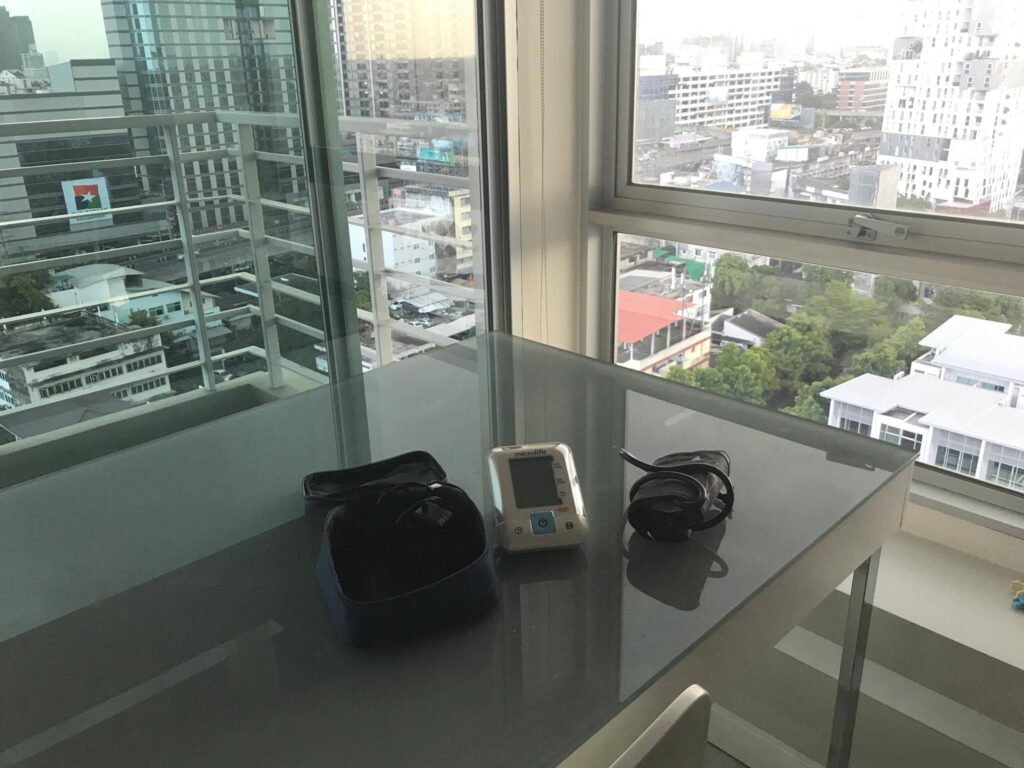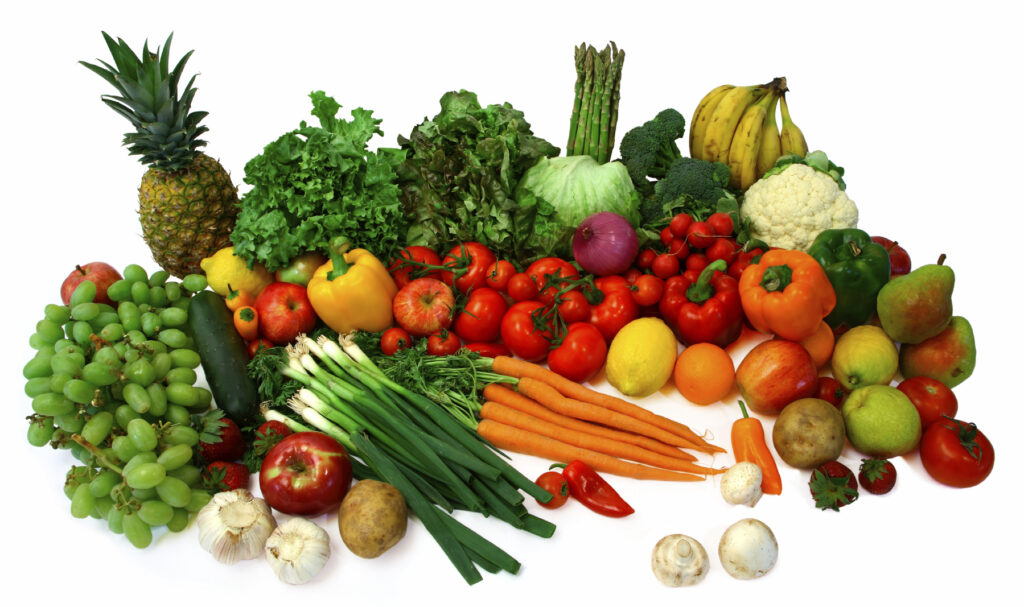
30-50% of the population are sensitive to sodium which means that a high sodium diet will result in water retention and low energy levels.
I discovered just this year that I’m very sensitive to sodium.
When I don’t watch my sodium intake, I start holding A LOT of water in my face and stomach.
The water retention smooths out my body and face and makes me look like I carry an extra 10-15 pounds of body-fat.
Discovering that I was sensitive to sodium was one of the most important diet adjustments I made.
I didn’t only look better after reducing sodium intake, but I also felt A LOT better and had higher energy levels throughout the day.
In this article, I will teach you how to reduce your sodium intake and give you additional tips on reducing water retention.
Target Sodium Intake To Reduce Water Retention: 1500 MG Per Day
If you’re sensitive to sodium, your target sodium intake is ~1500 mg per day.
This is the equivalent of 3.75 grams of salt or 0.75 teaspoon of salt since salt contains 40% sodium.
When you go grocery shopping, you can check every label for how much sodium is inside each food.
Sometimes the sodium contents will not appear on the label, but you will see how much salt is inside the food.
Since salt is 40% sodium, you can just multiply by 40% to get the sodium amount.
After you start reading labels and tracking your sodium intake, you will find that:
- Nearly all processed foods are high in sodium: ONE slice of pizza or a small frozen meal can have anywhere between 200-800 MG of sodium which is the equivalent of 13%-53% of your daily allowed intake.
- Most sauces are high in sodium. ONE tablespoon of soy sauce has 900 MG of sodium which is the equivalent of 60% of your daily allowed intake.
- Restaurant meals are by default high in sodium to add flavour. The sauces and salt added can easily contain your whole day’s sodium intake.
- Nearly all recipes are high in sodium. Salt is used to add flavour.
For you this means that following an IIFYM (If It Fits Your Macros) diet strategy will not work for reducing sodium intake.
You will need to follow a clean diet that contains healthy, whole foods and plenty of fruits and vegetables.
A diet that is full of whole foods, fruits and vegetables will ensure that you consume a low amount sodium.
Below, I will show you a quick comparison of sodium contents in foods that are similar.
Chicken breast: Marinated, regular (12 oz/336 grams):
- Marinated chicken breast: 2160 MG (144% of DV).
- Regular chicken breast: 216 MG (14% of DV).
Tomatoes: Canned, fresh (1 large red tomato):
- Canned red tomato: 210 MG (14% of DV).
- Fresh red tomato: 9 MG (0.6% of DV).
Chocolate bars: Dark chocolate, protein bar (40 grams):
- Nature valley protein bar: 180 MG (12% of DV).
- Lindt dark chocolate (85% cocoa): 15 MG (1% of DV).
The point I want to make with the examples above is that most foods and sauces have a low sodium and high sodium option.
By checking labels, you will learn which foods have a lower amount of sodium and thereby you can buy these instead.
In addition to checking food labels, you also want to avoid 2 common pitfalls that may put you above your daily allowed sodium intake.
(1) Restaurant meals are high in sodium
When you eat out, most meals will by default be high in sodium.
They will use a lot of salt and sauces in the meals to add flavor.
A big restaurant meal can easily put you above the recommended daily value for your sodium intake, therefore you want to tell them to use no salt in the cooking and to put sauces on the side.
(2) Sauces and Salt
You can use a moderate amount of low-sodium sauces in your meals to make them more palatable.
When you shop for sauces, buy those that are low-moderate in sodium and use them in moderation.
I emphasise moderation because most people will go overboard.
For example, one tablespoon of ketchup has around 160 MG of sodium.
If you use a total of 4-5 table spoons for all your meals combined, that’s most likely OK and will still keep you at a low sodium intake as long as the rest of your diet is low in sodium.
However, if you go overboard and use 5 table spoons with each meal, you will get 2400 MG of sodium from ketchup alone.
The same goes for salt.
If you decide to use salt in your meal to add flavour instead of a sauce, use it in moderation.
If you check your labels when doing groceries, use a moderate amount of salt/low sodium sauces and eat low sodium meals at restaurants, you will more than likely stay below 1500 MG of sodium per day.
Are You Sensitive to Sodium?
After 2-3 days of following a low sodium diet, most of the excess sodium and water retention will leave your body.
This is of course assuming that you do all the basics: drinking plenty of water and training on a regular basis.
After 3 days you want to check for two things:
- Bodyweight and water retention: Did you drop a lot of bodyweight and lose water weight around the stomach and face?
- Energy levels: Did your energy levels become higher or more stable?
For reference, here’s a photo showing how I look when I consume ~1500 MG sodium:

And here’s how I look 2 days later after eating A LOT of sodium:

When looking at the photos above, it can look like I had just gained 10 pounds of body-fat but I can assure you that’s not the case.
The photos are taken ~48 hours apart at the same time of the day (before breakfast).
After having a lot of sodium, I started holding a lot of water in my face, chest and stomach (hence no shirtless picture).
I gained around 6 pounds of bodyweight between the 2 days in those pictures, over 1 inch on the waist and felt really sluggish and low on energy in the second photo.
This is how high sodium sensitivity looks like.
If you have a high sensitivity to sodium, you will KNOW within 2-3 days of reducing sodium intake.
The difference is tremendous.
If you see no positive change after reducing sodium, you are more than likely not sensitive to sodium.
In that case, I still recommend that you follow my diet advice, but you can get away with using more sauces and salt in your diet. (Lucky you!)
The Connection Between Sodium, Water Retention, Heart Attack and Stroke
Now that we’ve covered how water retention affects your aesthetics and energy levels, let’s move on to health.
When you retain excessive water, your heart has to work harder to pump blood to the parts of your body that hold water (excess weight).
As a result, people that are sensitive to sodium and retain a lot of water are on average much more likely to have high blood pressure and a cardiovascular event such as a stroke and heart attack.
This is why I recommend that you buy a home device for checking your blood pressure.
Here’s mine:

You can get one for less than 80 USD at most pharmacies and then take measurements once or twice per month at home.
This is far superior to checking your blood pressure once or twice a year at the doctor’s office because you don’t want to walk around for 6-12 months with high blood pressure.
And in the case you have high blood pressure, you want to take action and regularly monitor if your blood pressure is improving.
I personally had very high blood pressure (150/75) last year despite being in great physical shape, in my early 20s and following a healthy diet for years.
Having a blood pressure of 150/75 means that I was at a high risk of stroke and heart attack.
Now, about 1 year later, my blood pressure is down to 120/55 which is optimal.
The three biggest changes I made in my lifestyle were:
- Reducing sodium intake. (Already covered).
- Adding steady-state cardio 3-4 times per week for 30-40 minutes.
- Eating a lot more potassium in my diet.
Below, I will explain why I added steady-state-cardio and potassium in addition to reducing sodium.
Potassium: The increased potassium will help improve your fluid balance further by counterbalancing the water retention from sodium..
High potassium foods are essentially fruits, vegetables and potatoes:

Eat plenty of those with every meal and you will reach your target potassium intake.
Cardio will help you reduce excess water retention and sodium by sweating it out and improve your cardiovascular health.
I recommend that you add 3-5 days per week of 30-40 minutes, moderate intensity, steady-state-cardio.
When you dial in your sodium and potassium intake and add steady state cardio, you will achieve a better fluid balance, improve your blood pressure and have much higher energy levels throughout the day.
Be proud but stay hungry!
Oskar Faarkrog, ISSA Certified Trainer


 The Real Value of Online Personal Coaching (It’s not the Training Program or Diet)
The Real Value of Online Personal Coaching (It’s not the Training Program or Diet)
Leave a Reply